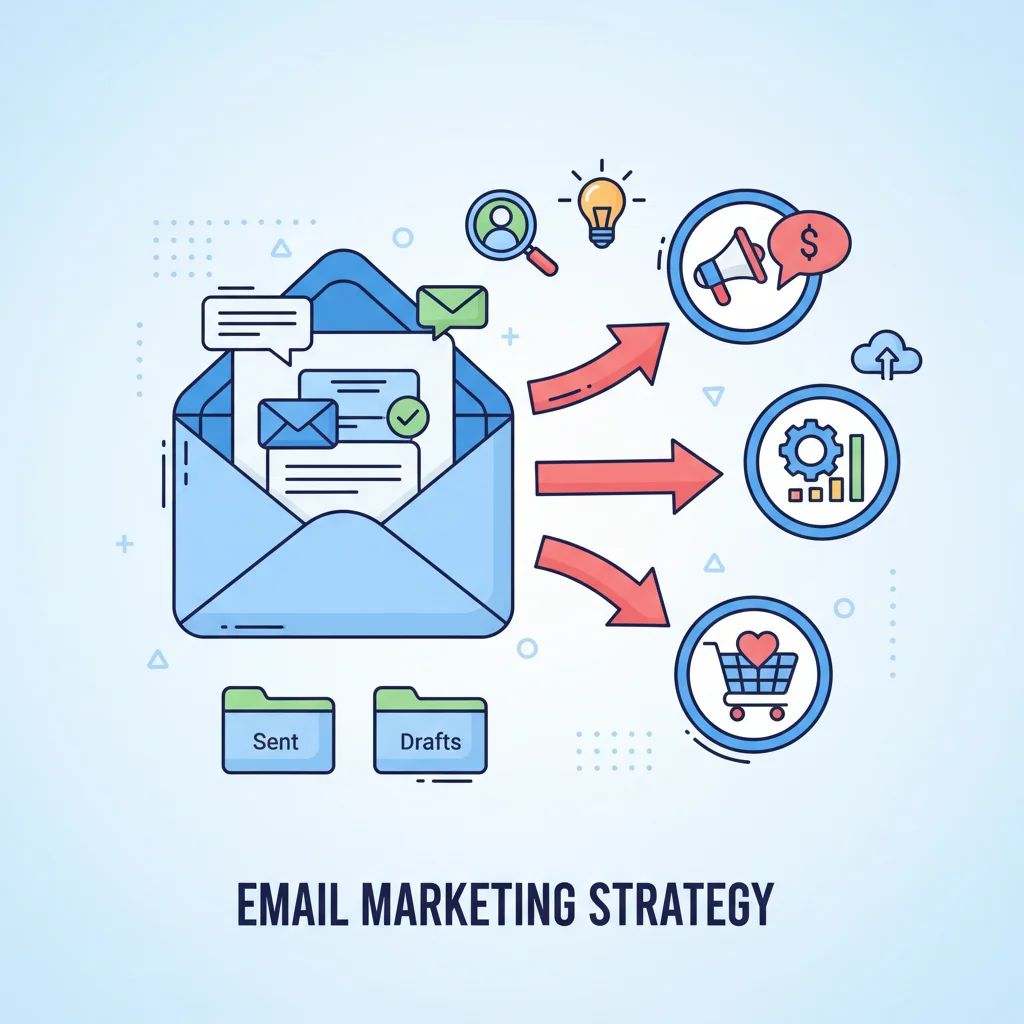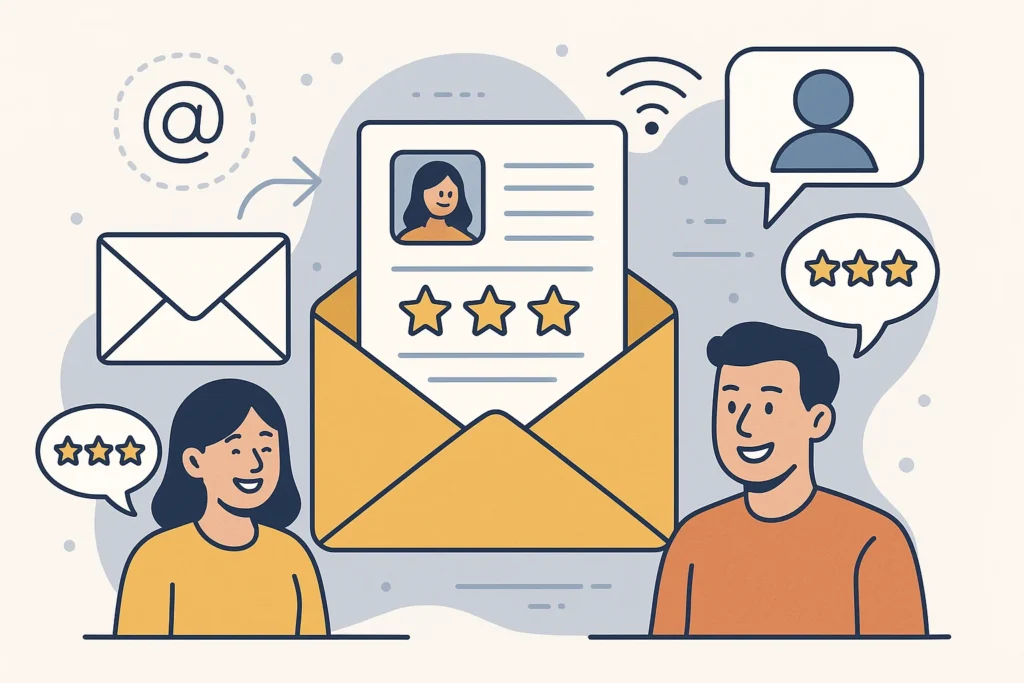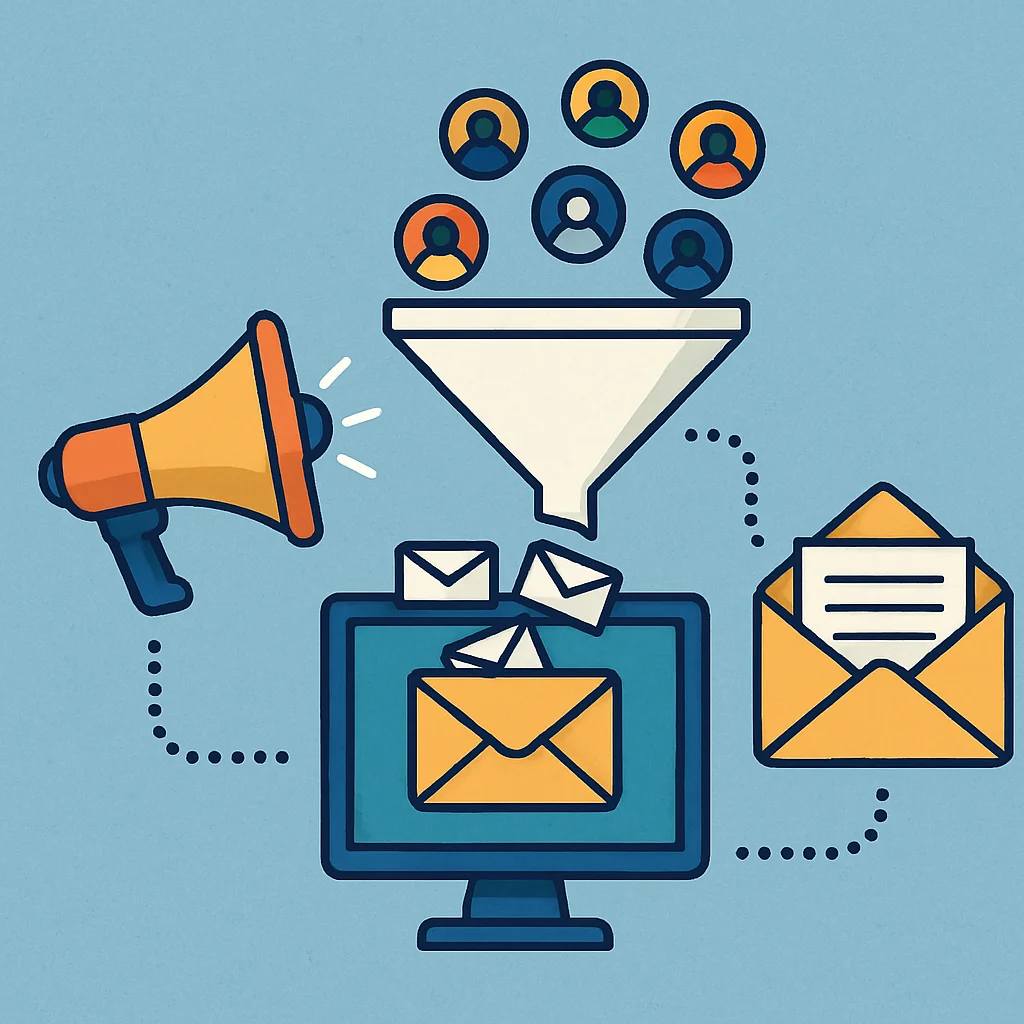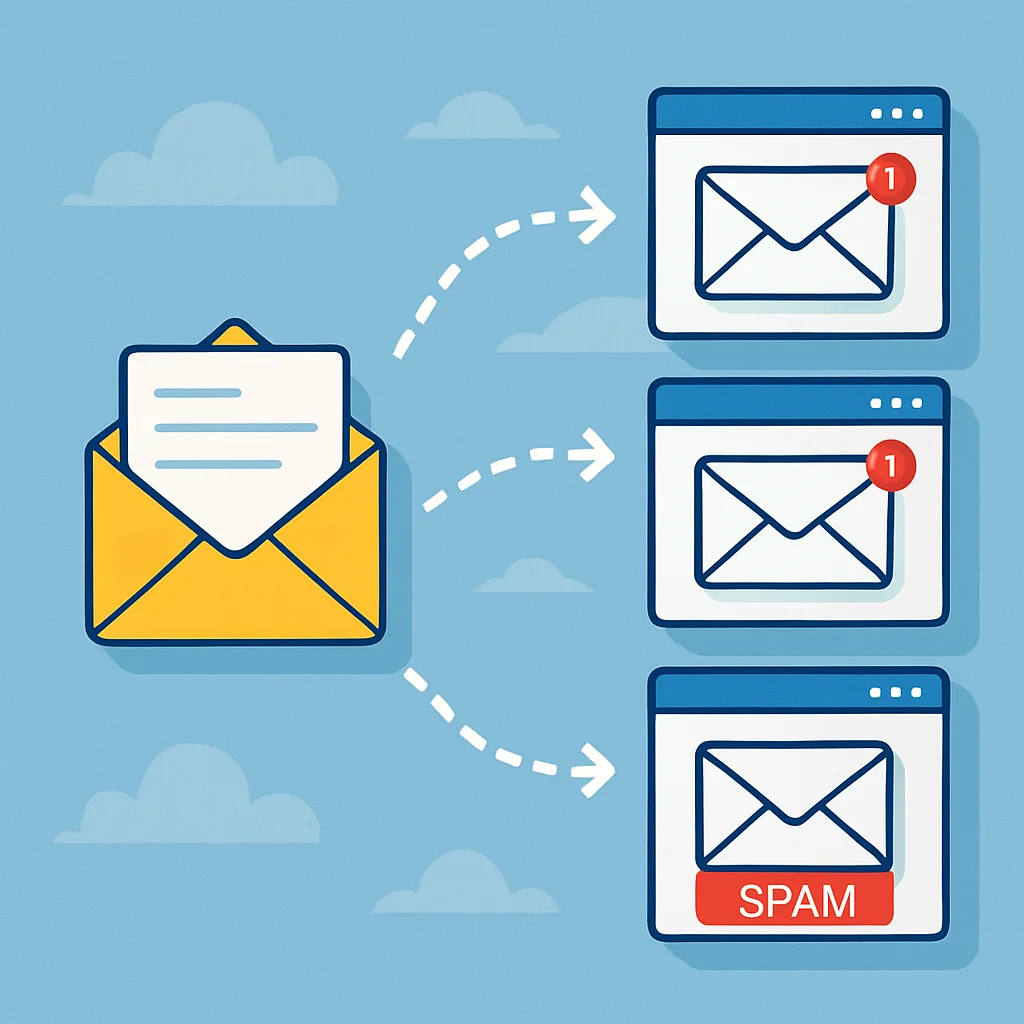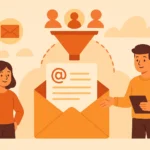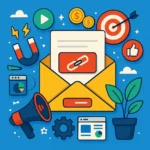Now Reading: Average Email Open Rate by Industry: Benchmarks for Success
-
01
Average Email Open Rate by Industry: Benchmarks for Success
Average Email Open Rate by Industry: Benchmarks for Success
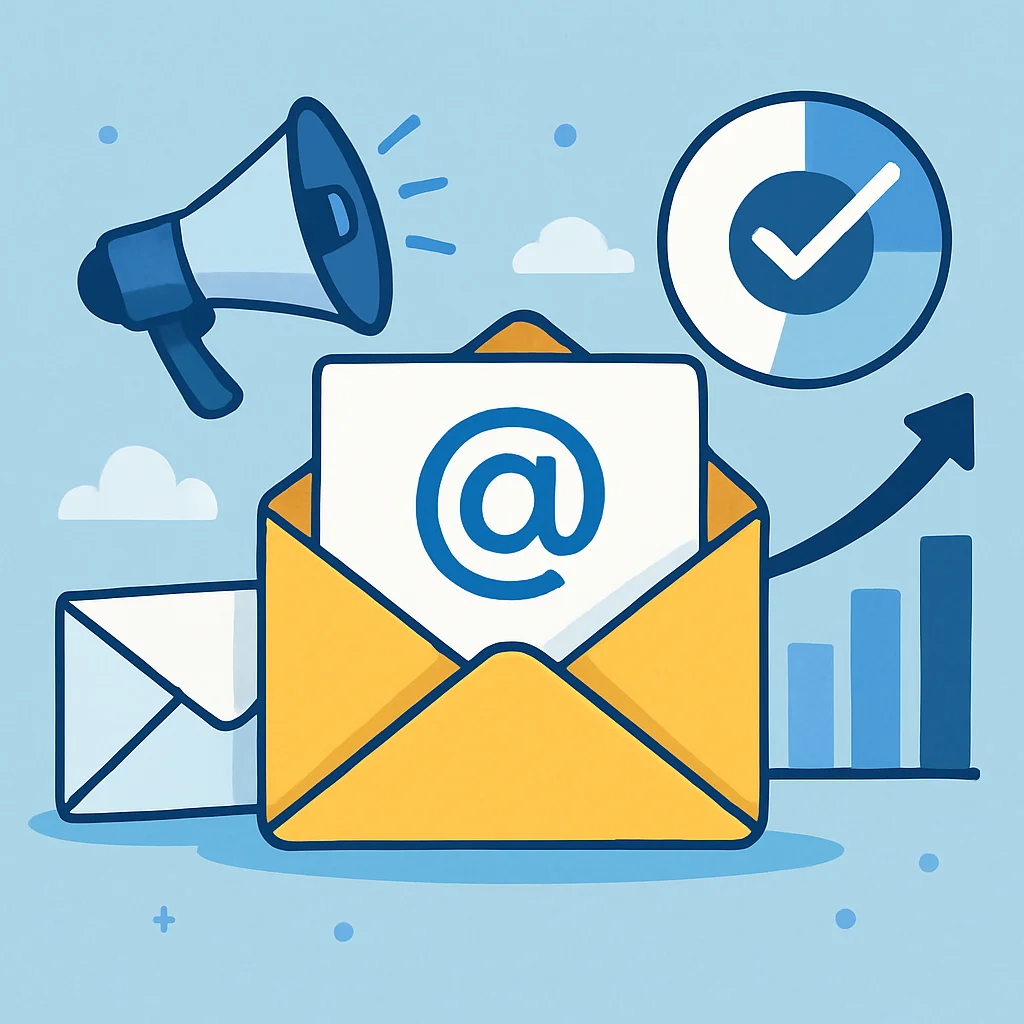
What’s a good email open rate for your specific industry? If you’re comparing your performance to generic benchmarks, you might be celebrating mediocrity or panicking unnecessarily. Let’s cut through the confusion and explore the real average email open rate by industry so you can set meaningful goals and strategies.
Key Takeaways
A good email open rate varies significantly by industry, typically ranging from 20-35% across most sectors. Here’s what you need to know:
- Religion, hobbies, and non-profit organizations enjoy the highest open rates (53-60%)
- Travel, transportation, and technology sectors face the lowest open rates (21-23%)
- Automated flows consistently outperform campaigns with average open rates of 48.57% versus 37.93%
- Weekly newsletters generate the highest engagement with average open rates of 48.31%
- Your open rate goal should account for your specific industry, email type, and audience familiarity
What Exactly Is an Email Open Rate?
An email open rate is simply the percentage of people who open your email after it lands in their inbox. The formula is pretty straightforward:
Number of emails opened ÷ Number of emails delivered × 100 = Open rate percentage
Sounds simple, right? But here’s where things get interesting. The average email open rate across all industries in 2025 ranges from approximately 29.49% to 42.35%, depending on which study you look at. That’s a pretty big range!
Why such variation? Different email service providers measure opens differently, and recent privacy changes (looking at you, Apple) have made tracking more complicated. Plus, open rates fluctuate based on countless factors from industry to audience to time of day.
Useful Articles:
Why Open Rates Matter (But Aren’t Everything)
Open rates give you a quick temperature check on your email performance. They tell you if:
- Your subject lines are compelling enough
- Your sending frequency is appropriate
- Your audience still finds you relevant
- Your emails are actually reaching inboxes (not spam folders)
But-and this is a big but-opens aren’t the end goal. An opened email that doesn’t drive action is just… opened. Still, you can’t get clicks without opens, so this metric deserves your attention.
Average Email Open Rate by Industry
Let’s get to the juicy data you came for. Industry benchmarks vary wildly, and knowing where you stand compared to similar businesses can help you set realistic goals.
The High Performers
Some industries naturally enjoy stellar open rates:
- Religion: 59.70%
- Hobbies: 53.33%
- Non-Profit: 53.21%
- Creative Services/Agency: 50.00%
- Health and Fitness: 48.90%
Why do these industries kill it? They typically have highly engaged, opt-in audiences who actively seek their content. Religious organizations, for example, communicate with deeply committed community members. Hobby-related emails go to passionate enthusiasts who want that content.
The Middle Ground
These industries see respectable open rates:
- Medical, Dental, and Healthcare: 44.60%
- Education: 45.32%
- Consulting: 45.74%
- Home and Building Services: 35.94%
- Family and Social Services: 35.82%
- Dining and Food Services: 34.66%
Notice a pattern? Many of these industries provide essential services or information people actively need. Their emails often contain important updates or valuable information rather than just promotional content.
The Challenging Industries
Some industries face tougher inbox competition:
- Travel and Transportation: 22.57%
- Technology Services: 21.91%
- Financial Services: 22.28%
- Manufacturing: 25.22%
- E-commerce: 31.08%
These lower rates don’t necessarily mean poor performance-they reflect the reality of these industries. E-commerce businesses, for instance, tend to send more frequent promotional emails to larger lists, naturally resulting in lower open rates.
Useful Articles:
Email Type Matters: Campaigns vs. Automated Flows
One of the most striking findings from recent data is the significant performance gap between campaign emails and automated flows.
Campaign Email Open Rates
Campaign emails-those one-off sends to your list-average 37.93% open rates across industries. The top 10% of performers hit 54.78%.
By industry:
- Sporting Goods: 39.90%
- Home & Garden: 39.33%
- Food & Beverage: 39.15%
- Toys & Hobbies: 39.06%
- Hardware & Home Improvement: 38.51%
The lowest campaign open rates:
- Mass Merchant: 35.67%
- Health & Beauty: 35.90%
Automated Flow Open Rates
Automated flows-triggered by specific customer behaviors-significantly outperform campaigns with an average open rate of 48.57%. Top performers reach an impressive 65.74%.
By industry:
- Sporting Goods: 51.71%
- Food & Beverage: 50.62%
- Home & Garden: 50.00%
- Hardware & Home Improvement: 49.50%
- Electronics: 49.14%
The lowest automated flow open rates:
- Mass Merchant: 44.82%
- Health & Beauty: 46.73%
Why the Difference?
Automated flows perform better because they’re:
- Triggered by specific customer actions
- More personalized and relevant
- Timely (sent when the customer is actively engaged)
- Often expected (like order confirmations or welcome emails)
This data makes a compelling case for investing in email automation as part of your strategy.
Newsletter Benchmarks Worth Noting
If newsletters are part of your email strategy, here’s what you should know:
- Weekly newsletters generate the highest engagement with average open rates of 48.31%
- Newsletters generally achieve higher open rates than promotional emails
- About 14.6% of email marketers prioritize newsletters in their campaigns
The sweet spot for newsletter frequency appears to be weekly-frequent enough to stay top-of-mind but not so frequent that you become annoying.
Useful Articles:
Factors That Influence Your Open Rates
Your industry isn’t the only thing affecting your open rates. Several key factors can make or break your email performance:
Subject Line Impact
No surprise here-your subject line is like the headline of a newspaper. If it doesn’t grab attention, nobody’s reading the article. Great subject lines:
- Create curiosity or urgency
- Avoid spam trigger words
- Keep it short (under 60 characters)
- Personalize when possible
- Make a clear promise
I’ve found that subject lines with questions often outperform statements, and using numbers can increase opens by up to 15%.
Sender Reputation
Who the email is from matters as much as what it says. Emails from recognized and trusted senders get opened more often. This includes:
- Using a consistent sender name
- Building sender reputation over time
- Avoiding “no-reply” email addresses
- Maintaining good list hygiene to prevent spam complaints
List Quality & Segmentation
A smaller, engaged list will always outperform a massive, disinterested one. Quality beats quantity every time when it comes to email marketing.
Segmentation can dramatically improve open rates by ensuring content relevance. Some effective segmentation strategies include:
- Geographic location
- Past purchase behavior
- Engagement level
- Content preferences
- Customer journey stage
Timing and Frequency
When and how often you send emails can significantly impact open rates:
- Test different days and times for your specific audience
- Avoid sending during peak hours when inboxes get flooded
- Find the sweet spot for frequency (too many = fatigue, too few = forgetting who you are)
- Consider time zones if you have a geographically diverse audience
How to Improve Your Email Open Rates
Now for the actionable part-how to boost those open rates regardless of your industry.
Craft Compelling Subject Lines
Your subject line is your first (and sometimes only) chance to grab attention:
- Be specific: “Last day: 40% off summer collection” beats “Sale ending soon”
- Create urgency: “Only 5 spots left for tomorrow’s webinar”
- Ask questions: “Ready to double your conversion rate?”
- Use personalization: Including the recipient’s name can increase open rates by 29%
- A/B test: Try different approaches and let the data guide you
Perfect Your Preheader Text
The preheader is the preview text that appears after the subject line in most email clients. Many marketers waste this valuable real estate with “View in browser” or “Having trouble viewing?”
Instead, use your preheader to:
- Expand on your subject line
- Add a teaser of what’s inside
- Include a call-to-action
- Create curiosity that demands resolution
Optimize Send Time and Frequency
Timing can make or break your open rates:
- Test different send times: What works for one audience might flop with another
- Consider your audience’s routine: B2B emails often perform better during business hours, while B2C might do better evenings or weekends
- Find your frequency sweet spot: Too many emails lead to fatigue, too few lead to disengagement
Clean Your Email List Regularly
A clean list is crucial for healthy open rates:
- Remove inactive subscribers (no opens or clicks for 3-6 months)
- Implement a re-engagement campaign before removing inactives
- Use double opt-in to ensure quality subscribers from the start
- Monitor bounce rates and remove invalid addresses promptly
Segment Your Audience
Sending relevant content to specific segments can dramatically improve open rates:
- Behavior-based segments: What have they clicked on or purchased?
- Demographic segments: Age, location, job title, etc.
- Engagement segments: Highly engaged vs. at-risk subscribers
- Purchase history: First-time buyers vs. loyal customers
Personalize Beyond the Name
Personalization goes way beyond just using someone’s first name:
- Reference past purchases or browsing history
- Acknowledge their history with your brand
- Send content based on their specific interests
- Tailor offers to their previous behavior
Test and Optimize Continuously
Email marketing isn’t “set it and forget it.” Continuous testing leads to continuous improvement:
- A/B test subject lines, preheaders, and sender names
- Try different email designs and layouts
- Test various CTAs and their placement
- Experiment with email length and content types
Industry-Specific Email Open Rate Strategies
Different industries require different approaches. Here are some tailored strategies for various sectors:
For E-commerce (31.08% average open rate)
E-commerce faces tough competition in the inbox. To stand out:
- Segment based on browsing and purchase history
- Use abandoned cart automation (these have much higher open rates)
- Create urgency with limited-time offers
- Showcase new arrivals to engaged customers
- Personalize product recommendations
For B2B and Technology Services (21.91% average open rate)
B2B emails often struggle with lower open rates due to busy professional inboxes:
- Focus on educational content rather than promotional
- Use specific, value-oriented subject lines
- Segment by industry, company size, or role
- Send during business hours (Tuesday-Thursday tend to perform best)
- Leverage social proof and case studies
For Non-Profits (53.21% average open rate)
Non-profits already enjoy high open rates, but can push even higher:
- Tell stories about impact and beneficiaries
- Create emotional connections in subject lines
- Show transparency about how donations are used
- Send updates on specific projects donors have supported
- Use donor segmentation based on giving history
For Health and Wellness (31.67% average open rate)
Health-related emails can boost opens by:
- Focusing on solving specific problems in subject lines
- Using before/after concepts to demonstrate value
- Segmenting by health goals or interests
- Providing exclusive health tips or research
- Creating seasonal health content (flu season, summer fitness, etc.)
Tools to Track and Improve Email Open Rates
The right tools can make optimizing your open rates much easier:
Email Service Providers with Strong Analytics
- Klaviyo: Excellent for e-commerce with detailed segmentation
- Mailchimp: User-friendly with solid A/B testing capabilities
- HubSpot: Great for B2B with CRM integration
- Constant Contact: Simple interface with good reporting features
Testing Tools
- Litmus: Test how your emails appear across different email clients
- Email on Acid: Spam testing and email previews
- Subject Line Testers: Tools like CoSchedule’s Email Subject Line Tester
List Cleaning Services
- NeverBounce: Verify email addresses before sending
- BriteVerify: Clean your list of invalid emails
- ZeroBounce: Remove risky addresses that could hurt deliverability
The average email open rate by industry provides a crucial benchmark, but it’s just the starting point. By understanding your specific industry standards, implementing targeted strategies, and continuously testing and refining your approach, you can beat the averages and create email campaigns that truly resonate with your audience. Remember that open rates are just one metric in your email marketing toolkit-clicks, conversions, and customer relationships are the ultimate goals. Now go craft some emails that people actually want to open!


